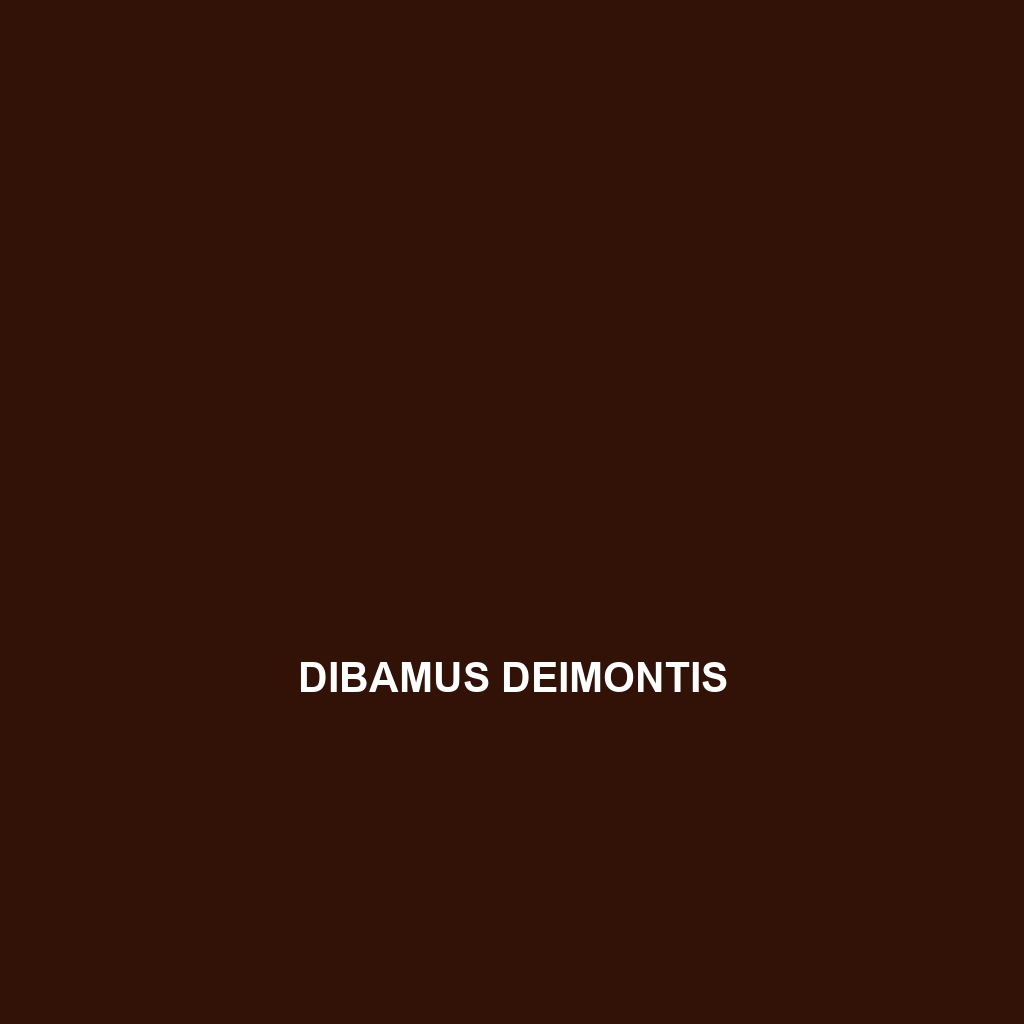Common Name: Dibamus deharvengi
Scientific Name: Dibamus deharvengi
Habitat:
Dibamus deharvengi is primarily found in the tropical forests of Southeast Asia, specifically in regions of Malaysia and Indonesia. This species thrives in humid, lowland environments, often residing in leaf litter and burrows beneath the forest floor. Its preference for dense, moist undergrowth makes it less visible within its natural habitat.
Physical Characteristics:
Dibamus deharvengi is a legless lizard that can reach a length of approximately 30 to 40 centimeters. Its smooth, shiny scales exhibit a distinctive brown to olive coloration, often featuring lighter speckles that provide excellent camouflage against the forest floor. This species has a slender, elongated body, with a unique flattened shape that assists in burrowing.
Behavior:
This species is primarily nocturnal, emerging during the night to forage and explore its environment. Dibamus deharvengi is known for its burrowing behavior, utilizing its smooth body to navigate through soil and debris effectively. Socially, they are often solitary, with individuals coming together only during mating season.
Diet:
Dibamus deharvengi is an insectivore, primarily feeding on small insects and invertebrates such as ants, termites, and beetles. This species uses its keen sense of smell to locate food sources hidden within the leaf litter and soil.
Reproduction:
Breeding typically occurs during the wet season, when environmental conditions are optimal. Females lay a small clutch of eggs, usually ranging from 2 to 4 eggs, which they conceal in moist, sheltered areas. The hatchlings are independent from birth, quickly developing the skills needed to survive in their habitat.
Conservation Status:
Currently, Dibamus deharvengi is classified as vulnerable, primarily due to habitat loss from deforestation and land development. Conservation efforts are vital to ensure the survival of this unique species and its habitat.
Interesting Facts:
Dibamus deharvengi is one of the few limbless lizard species, allowing it to move almost with serpentine fluidity. This adaptability makes it a fascinating subject for ecological studies related to evolution and reptiles.
Role in Ecosystem:
As an insectivore, Dibamus deharvengi plays a crucial role in controlling insect populations within its ecosystem. Its burrowing activities also aid in soil aeration and nutrient cycling, contributing to soil health and biodiversity.
